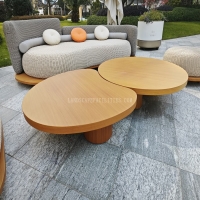Welcome to the website for landscape facilities products and knowledge.
What are the environmental impacts of disposing of or recycling landscape chairs at the end of their lifecycle?
As outdoor furniture, landscape chairs enhance our living spaces, but their end-of-life disposal or recycling poses significant environmental challenges. Understanding these impacts is crucial for sustainable practices.
1. Landfill Waste: Non-recyclable landscape chairs often end up in landfills, contributing to plastic pollution and occupying space for centuries. Materials like PVC or low-quality plastics degrade slowly, releasing microplastics and toxic chemicals into soil and water.
2. Carbon Footprint: Manufacturing new chairs to replace discarded ones increases CO2 emissions. Recycling reduces this impact but requires energy for transportation and processing.
3. Resource Depletion: Discarding chairs wastes raw materials like metal, wood, or plastic. Recycling conserves resources but depends on efficient collection systems.
4. Chemical Leaching: Painted or treated chairs may release harmful substances (e.g., lead, formaldehyde) during decomposition, contaminating ecosystems.
Sustainable Solutions:
- Opt for chairs made from recyclable or biodegradable materials (e.g., FSC-certified wood, recycled aluminum).
- Support take-back programs by manufacturers for proper recycling.
- Repurpose old chairs creatively (e.g., garden art) to extend their lifecycle.
By prioritizing eco-conscious choices, we can minimize the environmental footprint of landscape furniture while enjoying its benefits.
Related search:

Recommendation
Elliptical metal outdoor table with nested design, resembling wood grain, round table